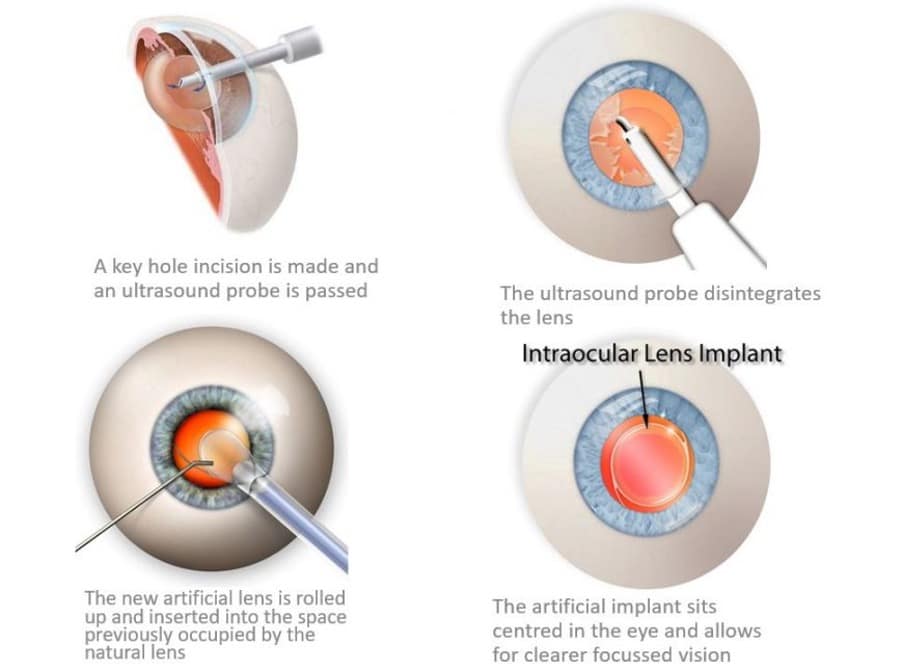Can’t see things clearly when they’re right in front of you? Let’s talk about long sightedness. The medical world calls it hypermetropia or hyperopia – a vision condition that makes focusing on close objects tough. The numbers are striking – the UK has more than two million people with eyesight problems. Research suggests half the world’s population might face vision issues by 2050.
Your age doesn’t matter – long sightedness can affect anyone. The condition often shows up after 40 when your eye’s lens gets stiffer and less flexible. Doctors call this specific change presbyopia. The symptoms don’t wait for middle age though. You might notice headaches, tired eyes, or catch yourself squinting at books and screens.
The good news? Long sightedness has several treatment options. Most people start with prescription glasses or contact lenses. Laser eye surgery has become a popular choice these days. The procedure takes less than an hour and gives you lasting results. Modern technology has made laser surgery a great option for people over 40 who want clear vision. This piece will walk you through everything – from spotting the signs to picking the right treatment that works for you.

When to Suspect Long-Sightedness: Key Symptoms
Early recognition of long-sightedness signs can help you address vision problems before they affect your daily life by a lot. These symptoms develop gradually and people often overlook them until routine activities become difficult.
Difficulty reading or using screens
Blurred vision when looking at objects close to your face serves as the main indicator of long-sightedness. Text might appear fuzzy when you read books, newspapers, or mobile phone screens. People often hold reading materials at arm’s length to see better. This challenge becomes obvious especially when you have dim lighting conditions.
Your ability to perform close-up tasks like reading menus, books, or viewing phone screens may worsen as the condition advances. Light entering your eye doesn’t focus properly on the retina, which causes these issues.
Frequent squinting or eye rubbing
People naturally squint to improve their focus. You might have hyperopia if you catch yourself narrowing your eyes to see clearly during close-up tasks. These actions show attempts to make up for unclear vision.
Headaches and tired eyes after close work
Long-sightedness often brings dull pressure behind the eyes or throbbing in the temples, especially after long periods of reading or computer use. Your eye muscles work harder to maintain focus, which leads to fatigue. People’s eyes become sore, tired, red or watery after focusing on close tasks. These symptoms usually get worse throughout the day.
What Causes Long-Sightedness and How It Develops
Understanding why long-sightedness happens helps explain how this condition affects people throughout their lives. Light entering the eye focuses behind the retina instead of directly on it. This makes nearby objects appear blurry.

Image Source: Dreamstime.com
Genetic and developmental factors
Long-sightedness runs in families, which points to a strong genetic link. Studies show specific genes affect eye development, including your eyeball’s axial length. Your chances of developing this condition go up substantially if your parents or siblings have hyperopia. Genetic makeup is a vital part of axial hyperopia, the most common form.
Changes in eye shape and corneal curvature
Two main structural elements cause long-sightedness:
- Eyeball length: Hyperopia usually happens when your eyeball is shorter than average from front to back (decreased axial length). Even tiny changes matter—just 1mm decrease in axial length creates 3 diopters of hyperopia.
- Corneal flatness: A flatter cornea (the clear front surface of your eye) makes it harder to focus light properly. A 1mm increase in radius of curvature leads to 6 diopters of hyperopia.
Presbyopia: Age-related long-sightedness
You might notice it’s harder to see things up close once you hit your forties—that’s presbyopia developing. Unlike regular hyperopia, presbyopia happens because your eye’s lens naturally changes with age and loses its flexibility. Your eye’s lens gets thicker and less elastic throughout your life. This starts during teenage years but becomes noticeable around 45.
The stiff lens can’t change shape easily, which makes focusing on close objects difficult. Everyone gets presbyopia eventually, whatever their previous vision history. It’s a normal part of getting older rather than a disease, but it causes symptoms similar to other types of long-sightedness.
Vision Correction Options at Precision Vision London
Precision Vision London provides multiple solutions for long-sightedness that match your visual needs and lifestyle. Long-sightedness, or hyperopia, affects your daily activities from reading to driving. You might struggle with glasses or want freedom from lenses. Our clinic gives you tailored surgical solutions from LASIK to lens replacement.
Laser eye surgery for long sighted patients
Laser eye surgery reshapes the cornea to fix how your eye focuses light – a permanent solution. Our procedures include:
- LASIK: Quick recovery with results visible within 24 hours
- PRK/LASEK: Ideal for patients with thinner corneas
- Advanced Surface Ablation: Tailored for various degrees of hyperopia
Patients achieve vision that exceeds the UK driving standard after treatment. Research shows approximately 85% of adults can have laser correction.
Refractive lens exchange for patients over 45
Refractive lens exchange gives exceptional results to patients over 45. We replace your natural lens with a synthetic implant. This surgery works like modern cataract surgery but happens before cataracts develop. The procedure takes 15-30 minutes. About 95% of patients love their new vision.

Benefits of choosing surgical correction
Surgical correction ends the ongoing costs of glasses and contact lenses. You won’t need daily maintenance routines anymore. About 80% of patients don’t need glasses after treatment. Local anaesthetic makes the procedures comfortable. Most patients go home the same day.
Our technology and surgeon expertise
State-of-the-art diagnostic equipment helps us map your eyes and plan treatment. Expert surgeons guide your experience from your first consultation through aftercare support. Our advanced lasers treat up to six diopters of astigmatism with your hyperopia. This ensures you get the best possible vision.
What to Expect Before, During and After Surgery
Surgery for long-sightedness takes you through a complete process from the first assessment to full recovery. A clear understanding of each step will reduce your anxiety and give you all the information you need.
Initial consultation and eye mapping
Your first visit to our clinic starts with a complete eye examination by our specialists who check if surgery suits you. Advanced diagnostic tests like corneal topography, aberrometry, and OCT imaging create a detailed map of your eye’s features. These tests show your corneal thickness, shape, and overall eye health. Patients need to stop wearing contact lenses before this assessment. Soft lens users should wait 3-5 days, while hard lens users must wait up to four weeks.
Customised treatment planning
Our surgeons create a treatment plan just for your eyes based on your diagnostic results. This personal approach will give a perfect correction of your long-sightedness. Your surgeon will talk about all options and possible results and answer your questions. Book your consultation now to explore safe, effective correction options with our expert team.
Recovery timeline and aftercare support
Each procedure has its own recovery time:
- For LASIK: You’ll see better vision within 24 hours
- For PRK/LASEK: Recovery takes 1-2 weeks
- For lens replacement: You can go home the same day
After surgery, you’ll get prescription eye drops that help healing and artificial tears for comfort. Your eyes might feel a bit gritty or sensitive to light at first—this is normal.
Long-term outcomes and follow-up care
We provide complete aftercare with regular check-ups to track your progress. Most patients see better than the UK driving standard requires, and about 80% don’t need glasses after treatment. You’ll need follow-up visits at key times—the day after surgery, then at one month and three months.
Conclusion
Long-sightedness affects millions of people in the UK, and many people don’t get the help they need. This piece explains how hyperopia happens when light focuses behind the retina instead of right on it, which makes it hard to see things up close. Your genes, eye shape, and getting older all play a part in this common condition. Spotting the signs early is vital to fix vision problems. Blurry vision while reading, headaches after close-up work, and constant eye strain point to possible hyperopia.
Precision Vision London gives you several ways to correct long-sightedness. LASIK and PRK reshape your cornea with amazing precision, and this is a big deal as it means that the results are better than UK driving standards. If you’re over 45, refractive lens exchange might work best because it fixes both hyperopia and presbyopia at once.
Your trip to Precision Vision London starts with complete eye mapping using the latest diagnostic tools. This full picture will give a treatment plan that matches your exact vision needs. The results speak for themselves – about 80% of patients don’t need glasses after treatment. All the same, the good points usually outweigh the short-term recovery discomfort. Life without daily lens care, no more ongoing eyewear costs, and substantially better quality of life await you at our clinic.
Our expert surgeons take care of everything from your original consultation through aftercare support. Precision Vision London uses advanced technology and gives personal attention to help fix your long-sightedness and give you the clear, comfortable vision you want.
Key Takeaways
Long-sightedness affects over two million people in the UK, but effective treatment options can restore clear vision and improve quality of life significantly.
- Long-sightedness causes blurred close-up vision, headaches, and eye strain—symptoms often develop gradually but worsen without treatment.
- The condition stems from genetic factors, shorter eyeball length, or age-related lens stiffening (presbyopia after age 40).
- Laser eye surgery achieves excellent results, with 80% of patients no longer needing glasses after treatment.
- Modern surgical options include LASIK for quick recovery and lens replacement for patients over 45 with presbyopia
Early recognition and professional assessment are crucial for preventing long-term complications, With advanced diagnostic technology and personalised treatment plans, surgical correction offers lasting freedom from glasses and contact lenses.
FAQs
Q1. What are the main symptoms of long-sightedness? The primary symptoms include difficulty seeing objects up close, frequent headaches after close-up work, eye strain, and squinting or rubbing eyes often.
Q2. Can long-sightedness be corrected with surgery? Yes, long-sightedness can be corrected surgically. Options include laser eye surgery (such as LASIK or PRK) for reshaping the cornea, and refractive lens exchange for patients over 45, which replaces the eye’s natural lens with a synthetic implant.
Q3. How long does recovery take after laser eye surgery for long-sightedness? Recovery time varies depending on the procedure. For LASIK, most patients notice improved vision within 24 hours. PRK or LASEK typically takes 1-2 weeks for recovery. Full stabilisation of vision may take a few months.
Q4. What percentage of people no longer need glasses after surgical correction for long-sightedness? Approximately 80% of patients no longer need glasses after surgical correction for long-sightedness. Most achieve vision that exceeds the UK driving standard following treatment.
Q5. Is laser eye surgery suitable for everyone with long-sightedness? While laser eye surgery is effective for many, it’s not suitable for everyone. About 85% of adults are candidates for laser correction. Factors like corneal thickness, overall eye health, and degree of long-sightedness determine suitability. A comprehensive eye examination is necessary to determine eligibility.
Authors & Reviewer
-
 Olivia: Author
Olivia: AuthorHi, I'm Olivia, a passionate writer specialising in eye care, vision health, and the latest advancements in optometry. I strive to craft informative and engaging articles that help readers make informed decisions about their eye health. With a keen eye for detail and a commitment to delivering accurate, research-backed content, I aim to educate and inspire through every piece I write.
-
 Dr. CT Pillai: Reviewer
Dr. CT Pillai: ReviewerDr. CT Pillai is a globally recognised ophthalmologist with over 30 years of experience, specialising in refractive surgery and general ophthalmology. Renowned for performing over 50,000 successful laser procedures.

